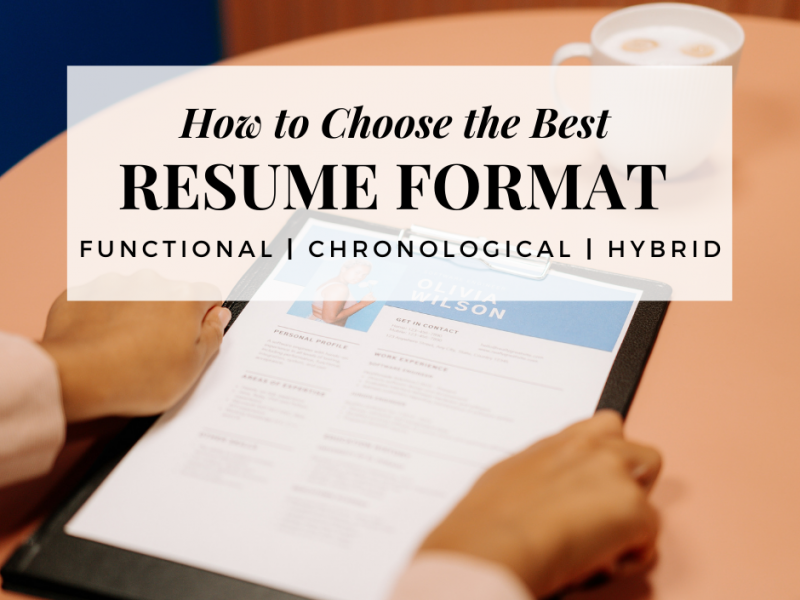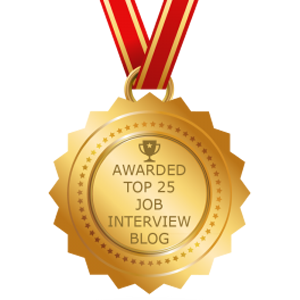Updated: December 2020
Your resume can make or break your chances of landing an interview. Therefore it’s important to get your resume right. There are 3 different types of resume formatting strategies. So how do you choose the right one for you? In this blog post we will explain the 3 most commonly used resume formats and the benefits of each. We will also explain when to use each format.
Why All Resume Formats Are Not Created Equal
Not all career paths are created equal. If you happen to be on a career path that is less-than straight-forward, you know what I’m’ talking about. In addition to figuring out how to brand your career path, you might also be aware that hiring managers will only give your resume a few seconds of attention when scanning through piles of resumes. If you’ve had an unconventional career path, are changing careers, have resume gaps or other unexpected career scenarios – you’ll want to select your resume format carefully. Each resume format supports a different type of branding strategy. Therefore you will need to know how to select the perfect resume format for your situation.
A Word of Caution About Designer Resume Templates
One trend that I’m seeing when I do resume reviews, is that of candidates using designer resume templates. These templates are usually free or very inexpensive. They are easily downloadable and editable and usually contain a strong visual appeal and pops of color. While these are nice to look at, I STRONGLY warn against using these templates when applying for jobs through online job boards. The reason I don’t recommend these templates is because they can get easily rejected by Applicant Tracking Systems or ATS. If your resume is getting dinged by ATS, you can be sure that the only emails you will get from employers are those auto-rejection emails!
Resume Format #1: The Functional Resume
A functional resume can be useful for people who:
- Have employment gaps in their work history
- Frequently change jobs or career paths
- Are re-entering the workforce after many years off (stay at home moms / caretaker for elderly parents)
The functional resume format can be useful for highlighting your most relevant information, even if it is not your most recent experience. This type of resume is used to highlight your abilities rather than your chronological work history. You will still need to showcase your work history and include the dates, but this will be towards the bottom of your resume instead of the top.
Why Functional Resumes Can Be Beneficial
In a functional resume, you will highlight skills that are transferable to the industry for which you are applying. For instance, a stay at home mom who ran a soccer league for 2 years, may want to show case the management, and scheduling skills she has perfected during her time away from the office. These experiences will be laid out on your resume, after your professional summary and key skills area. Your summary of professional experience will only include the names of the company, titles, and dates with perhaps a short description of what you did at the company. Any of the transferable skills that were performed at these companies should already be listed towards the top. This information is followed by your education and training unless your education and training are recent and/or will help you in summarizing your transferable skill set.
When to Use a Functional Resume
The functional resume should only be used if the information submitted within a chronological resume would cause multiple gaps of information that leave the hiring manager assuming that you are not qualified for the position. I have heard many clients say to me, “but I was told that I should never use a functional format.” While having a functionally formatted resume isn’t ideal, it certainly does have a useful place if you need to strategically show your relevant skills. Remember: hiring managers and recruiters are going to be on the lookout for the person who has the potential to do their job. If your potential fit isn’t immediate from an unconventional career path, highlighting it up top in a functional format will work to your benefit.
“One of the first things I realized when working with NG Strategy was that I didn’t know what I didn’t know. As a communications professional, I had thought my resume, profile and cover letters were compelling, but when they failed to generate interviews, I decided to give NG Strategy a try as Noelle and team had been highly recommended. Within three weeks, I had new resume, a targeted cover letter and a greatly enhanced LinkedIn profile. I “get it” now…I get what you are supposed to do and how to have an edge. I have been in the work force for more than 30 years, and my career has taken me in a few directions. NG Strategy helped me to hone my skills and experience and better define my “brand” in a way I hadn’t been able to before. Now, I am off to find a great job and am feeling so well prepared and confident thanks to NG Strategy. What they were able to accomplish in just a few weeks would have taken me months, if ever, to achieve. Wonderful people and process–and worth every penny! I highly recommend The Works –and wish you all great success in your search!” – Priscilla, VP Communications and The Works Client
Resume Format #2: The Chronological Resume
The chronological resume is a more popular format since the career path can be easily grasped from a simple scan of the dates, titles, and companies. This resume should contain a professional summary, key skills section, reverse chronological listing of your career experience, and related accomplishments. Your education and training skills will often be placed towards the bottom unless you are a recent graduate.
When to Use a Chronological Resume
This format is used for someone with a typical career history. It may include a previous gap in your experience, but your overall path has taken a predictable move without many curve balls thrown in the way. If you have a typical career history, but a confusing brand, you’ll want to try these resume fixes.
Resume Format #3: The Hybrid resume
A happy medium between the chronological and function formats is the hybrid resume. This is a newer format created to combine the best aspects of chronological and functional resumes. This format highlights relevant skills while providing details regarding a candidate’s work history.
When to Use a Hybrid Resume
The hybrid format is great for new graduates, entry-level job seekers, those with little experience, career changers, career re-entry, or those with a strong chronological resume who would like to display additional skills or accomplishments towards the top of their resume. It’s a great option for when you’re not quite sure which resume format applies to you.
Hybrid resumes are extremely effective in diminishing impact of gaps by filling in additional space with information about key skills and accomplishments. Perhaps you are a project manager who wants to really show off some key projects that you take great pride in, this would be the format for you.
Bonus Resume Tip: Getting Started
Once you have picked out a format, it’s time to get started on creating that perfect resume. One key tip that I use in creating a powerful resume is select 3 job postings and tailor the resume to showcase the requirements and skills that these job postings are asking for. This will demonstrate your skills and expertise to potential hiring managers. Your goal is to create a powerful and high-impact resume, which provides an attractive, easy to read format, full of useful information and accomplishments. Choosing the right format is key to making this happen.
If you’re hoping to improve your resume and land a job in record time, check out the Job Search Accelerator. In this budget-friendly job landing program you’ll have access to all of Noelle’s expert resources including a FREE expert resume review, optimized resume and cover letter templates, networking scripts and templates, LinkedIn optimization courses, interview answer scripts and more – everything you need to feel confident, navigate the job search successfully, and put your best foot forward as an applicant.


 Leveraging Your Strengths to Get Unstuck and Create Career Wins
Leveraging Your Strengths to Get Unstuck and Create Career Wins


